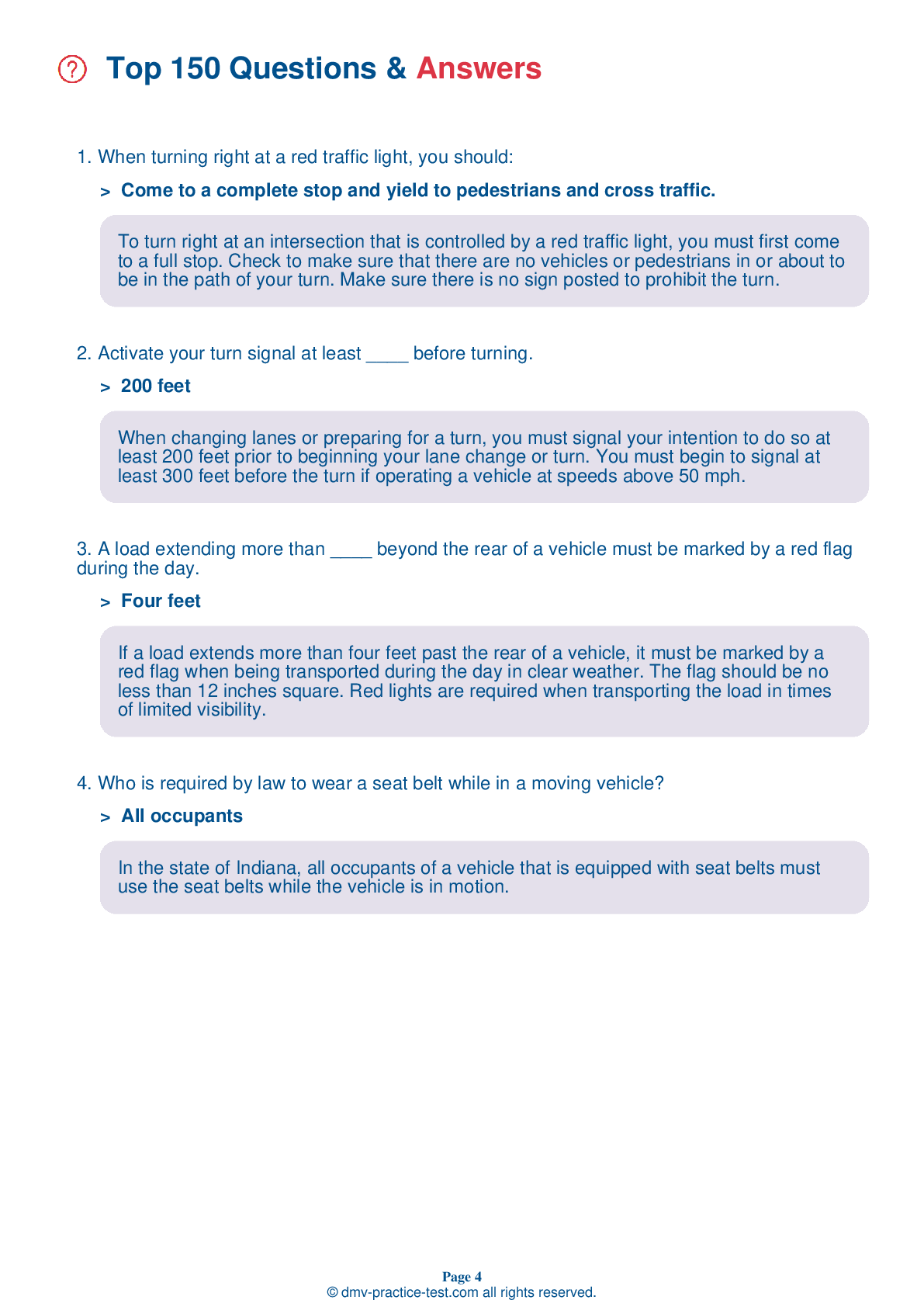FREE Indiana DMV Practice Test #5 Page 4 of 5
This set of Indiana DMV practise tests has been updated for January 2026. It includes questions based on the Indiana Driver Handbook's most significant traffic signals and laws for 2026. Use actual questions that are very similar (often identical!) to the DMV driving permit test and driver's licence exam to study for the DMV driving permit test and driver's licence exam.
On the practise exam, each question gets a tip and explanation to help you remember the concepts. The written component of the official Indiana DMV test will include questions about traffic rules, traffic signs, and driving statutes, as well as information from the Driver Handbook.
To obtain a passing grade, you must correctly answer 44 of the 50 questions. Take our DMV practise exam to help you prepare for your Indiana instruction permit or driver's licence.
The DMV exam is available in several languages.
Using any kind of testing assistance will result in an automatic fail, and the DMV may take additional action against your driver's licence, so stay away from it.
28 . This road sign means:

This sign indicates a merge ahead. It warns that two lanes of traffic moving in the same direction are about to become one.
29 . The driver's left arm and hand are extended downward. This hand signal means that the driver plans to:

If a driver's left arm and hand are extended downward, they are indicating that they intend to stop. Adjust your driving accordingly if following a driver who is using this hand signal.
30 . You may drive around the gates at a railroad crossing:
You are required to stop at all railroad crossings when signals warn of an approaching train. These signals may include flashing red lights, a lowered crossing gate, a flagger signaling, or a train’s audible signal of warning. Do not attempt to go around a lowered gate.
31 . This sign means:

Construction zones pose dangers to both drivers and construction workers. Orange highway construction signs warn drivers to be careful when encountering construction zones. This sign alerts drivers that construction will be changing normal driving routes and that they should expect to drive on a redirected route ahead.
32 . This sign means:

This sign indicates that there is a flagger ahead controlling traffic in a construction area.
33 . What color are pavement markings that separate traffic lanes moving in opposite direction?
Yellow lines are used in the center of the road to separate lanes of traffic moving in opposite directions.
34 . You may not park:
There are a number of locations where it is unlawful to park, including on a crosswalk or in a marked bicycle lane. When parking on the street, you must be within 12 inches of the side of the road.
35 . If you experience a tire blowout:
If you experience a tire blowout, take your foot off the gas pedal and do not immediately apply the brakes. Gradually slow down before gently applying the brakes and pulling off the side of the road.
36 . Drinking alcohol and driving is:
Driving while impaired or intoxicated is a serious traffic safety problem. Safe driving is not possible when you drink alcohol or take other drugs. Driving under the influence is dangerous both to you and to others on the road.
37 . Braking distance is affected by:
Factors that can affect braking distance include how fast your vehicle is traveling, the condition of your brakes and tires, and the condition of the pavement.
38 . This sign means:




